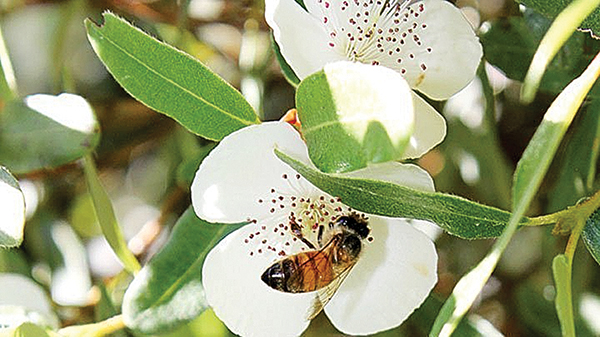
Melondy Phillips
Staff Writer
Different types
Different types of honey not only have different tastes, textures, colors and aromas, but also contain different nutritional compounds. There are more than 300, that’s far too many to list in an article so here are some of the more common ones, with, perhaps, a few unusual ones thrown in.
Acacia honey comes from black locust trees (known as false acacia), which produces an almost clear honey, considered one of the purest tasting honeys with a mild yet sweet flavor. This is one of the clearest honeys in the world and, due to its high fructose content, it is unlikely to crystallize. Rich in nutrients and antioxidants, acacia honey is sought after for its taste as well as its impressive health benefits for skin care, immune and energy boosting properties, wound healing and many others.
Buckwheat Honey
Buckwheat honey appears almost like molasses in color and has a strong/ bold flavor that makes it good to use for baking. The dark honey has more antioxidants than lighter colored products, making it good for sore throats. The boldness of this honey also makes it useful for marinades and meat dishes.
Clover Honey
Clover, thought of as a weed for a long time, is an easy-care, drought-tolerant grass alternative that may be harvested to use as forage, hay or silage. This means it is a common plant across much of North America resulting in clover honey being one of the most common honeys sold in the United States.
Eucalyptus Honey
Originally from Australia, eucalyptus honey is now also produced in California and tropical to temperate locations around the world. This honey has a unique yet distinctive flavor with a bit of a menthol aroma and medicinal ambience. Along with other health benefits common to honey, eucalyptus honey may help with insomnia and inhibit the growth of bacteria such as Staphylococcus aureus and Escherichia coli.
The presence of cineol, which produces the aromatic characteristics of eucalyptus, is known to have toxic effects when consumed in large amounts.
Fireweed Honey
Nectar from the Cham-aenerion angustifolium, or fireweed plant, produces a light colored and delicate flavored honey that can destroy bacteria.
Fireweed prefers cooler climates and is often the first foliage to emerge after a disaster, such as wildfires. Beekeepers trying to produce fireweed honey will often scout regions where fires just raged through. This can be a difficult process as hives are moved further north and into remote areas, which may or may not always produce enough honey for a decent crop. Due to the difficulties is producing fireweed honey, the price for this crop may be higher than other honeys.
Fireweed honey is highly effective at inhibiting the growth of staph infections, such as streptococcal pneumonia, so the higher price may be worth it.
Leatherwood Honey
Leatherwood, also called Tasmanian honey, is an exotic honey with a silky smooth, yet thick and creamy texture. Native to Tasmania, the leatherwood tree produces a lot of sweet nectar and the honey made from it is very rare. Since the trees only bloom about six to eight weeks per year, great effort is made to ensure the fresh honey is collected in a timely manner. A flavor description of this unique honey is as follows: pungent, somewhat smoky, subtle spicy undertones, and mildly sweet with a strong floral savor.
Part 4 of 6




How can I get a copy of the first two printings of “Honey”? I think in the July 20 and July 27 editions. I was saving all six parts but my first two were mistakenly thrown away.
We can send those articles to you.
Do you live in Pratt, WV